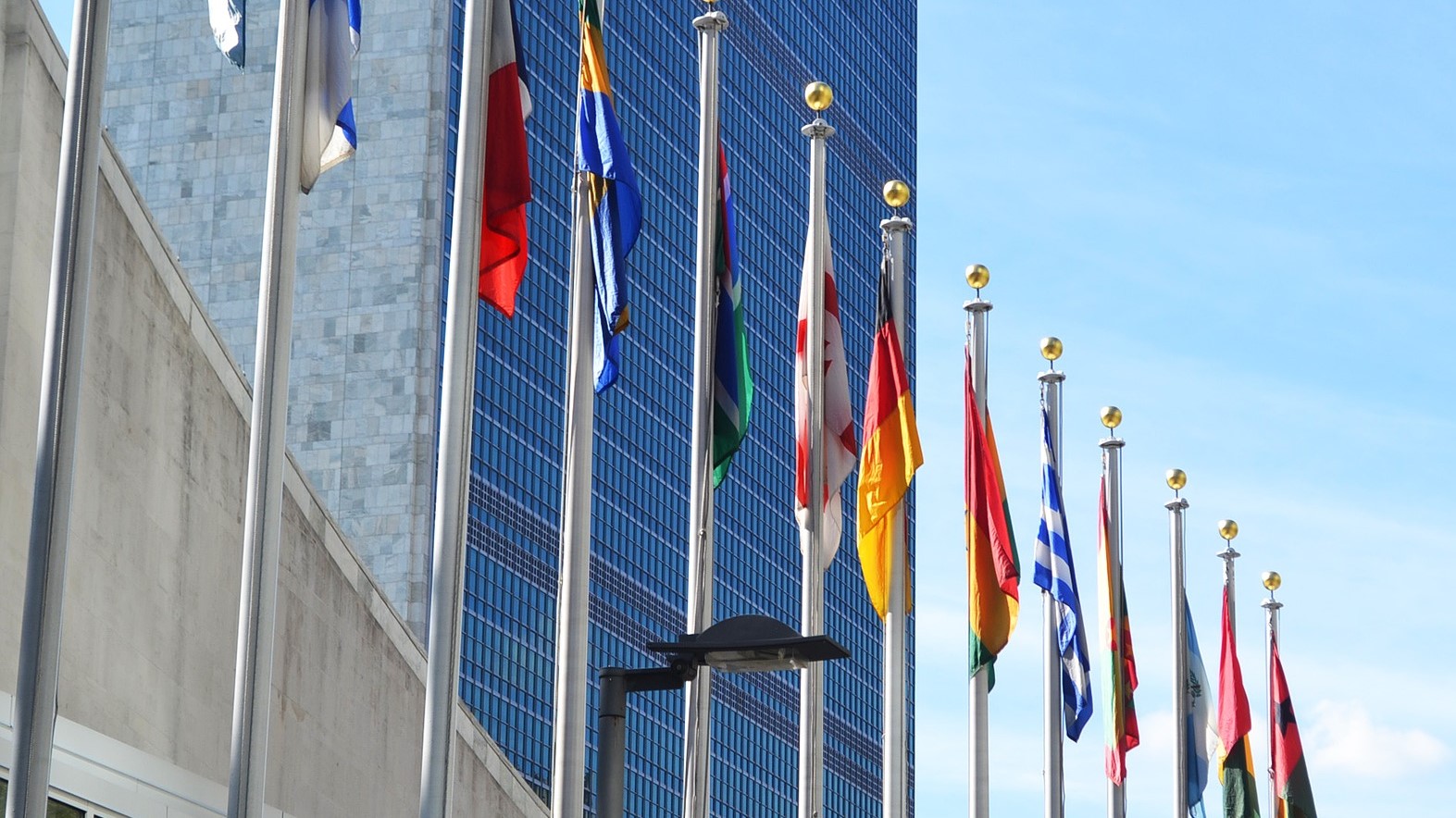
On 30 June and 1 July 2022, UN Member States will gather for the first UN General Assembly High-level Meeting on Improving Global Road Safety (HLM).
To get a sense of the importance and potential for the HLM, we spoke to several key figures within the UN system to get their perspectives.
The President of the 76th Session of the UN General Assembly will be the host for the HLM, bringing together Member States to address road safety and the 2030 targets. This is the first UN General Assembly HLM on road safety and therefore a significant moment. Read more about the 76th Presidency of the UN General Assembly HERE.

“Every year, road crashes are responsible for 1.3 million deaths and for over 50 million injuries all over the world. Many of the victims of these crashes represent our hope for the future – our younger generation. Traffic crashes also result in huge financial burden on people and economies. We must change this unnecessary, tragic and preventable trajectory for our families, communities and economies.
“The High-level Meeting on Improving Global Road Safety is an indispensable opportunity for us to make that change – to strengthen political will, scale up investment, and draw on lessons learned, to accelerate action on implementing the Global Plan for the Decade of Action on Road Safety 2021-2030.
“I fully support the international, regional, and national efforts by all stakeholders to reduce road traffic deaths and injuries by at least 50 per cent by 2030. I’m confident that this High-level Meeting will put us closer to reaching that target, and contribute to the achievement of the Sustainable Development Goals, and the 2030 Agenda as a whole.”
The UN Secretary-General’s Special Envoy for Road Safety is a key role in mobilizing sustained political commitment towards making road safety a priority. Read more about the Special Envoy HERE.
“My hope is that the first UN High Level Meeting on Improving Global Road Safety leads to renewed political leadership and increases wide range of collaboration from all sectors and all stakeholders. This would mean public, private and civil society stakeholders truly treat, and invest in, road safety to reflect its wide relevance, to reach so many other global goals. This would be measured by how much road safety is integrated into all relevant national and corporate policies, including on education, health, transport, climate mitigation, land-use planning, and disaster response, with proportionate national and international budget allocations.“
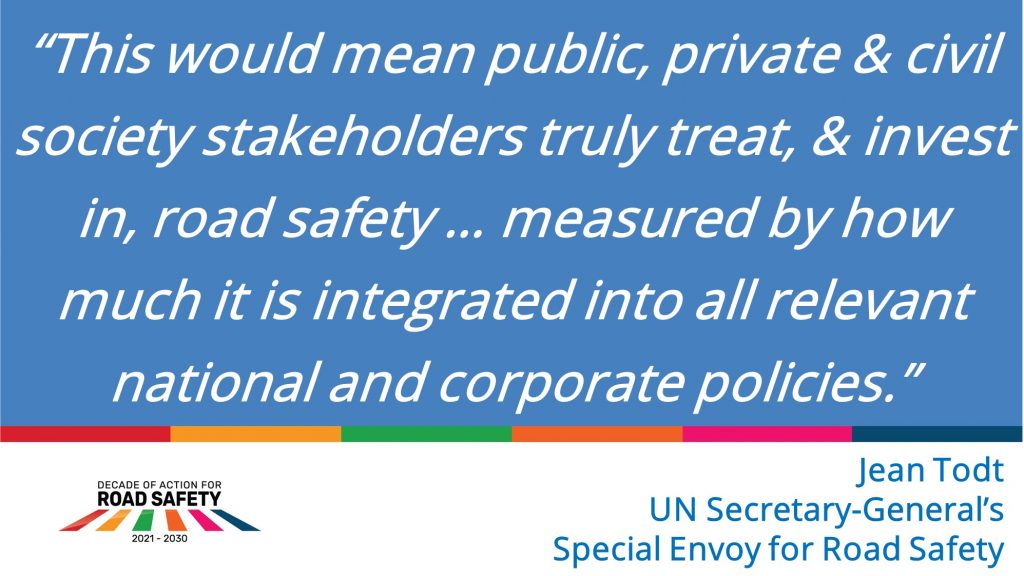
WHO are the UN agency with responsibility for road safety and the driving force behind the Decade of Action for Road Safety 2021-2030 and the Global Plan. Read more about road safety at WHO HERE.
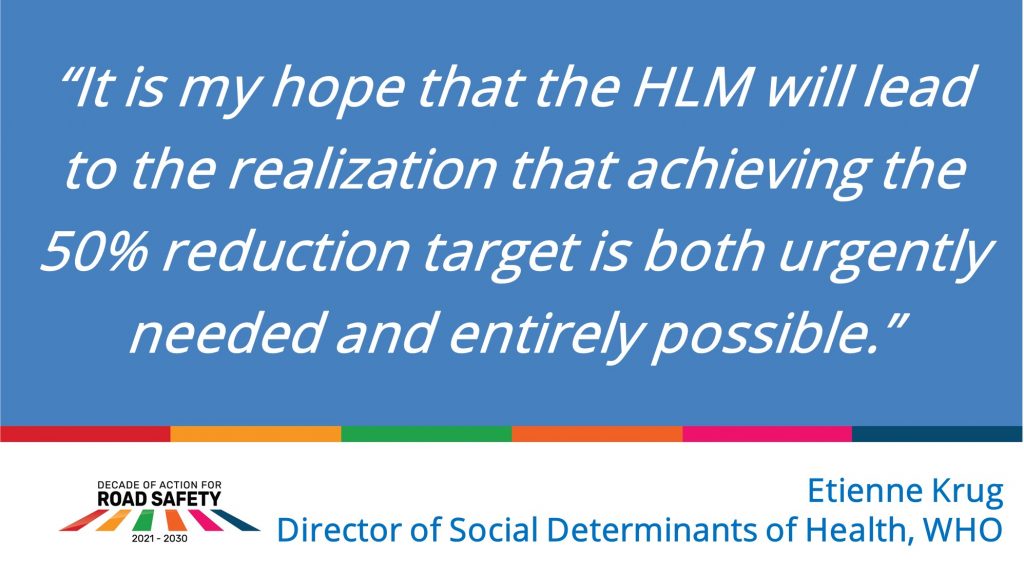
“The High-level Meeting on Global Road Safety, which is hosted by the President of the UN General Assembly, is a milestone for road safety and sustainable mobility. My hope is that in gathering heads of state, ministers and their delegations along with road safety advocates from civil society, business and academia, that we will mobilize political leadership and begin to address once and for all the gaps and challenges that are hindering progress and causing such tragic loss of life on our roads. This is vital to achieving the Decade of Action’s 50% reduction target.
It is my hope that the High-level Meeting on Global Road Safety will lead to the realization that achieving the 50% reduction target is both urgently needed and entirely possible. I hope that heads of government will take it upon themselves to provide the necessary leadership and that national plans with concrete and specific targets will be developed, funded and lead to accelerated action in many countries. As highlighted in the Global Plan for the Decade of Action, the future of mobility is one that promotes health and well-being, protects the environment and benefits all of us. I hope that this gathering will help move us towards making that vision a reality.”
The UN Road Safety Fund was set up to finance and leverage strategic funding for high-impact road safety projects in low- and middle-income countries’. One of the key challenges to achieving the Decade of Action is comprehensive funding for evidence-based road safety action. Read more about the UNRSF HERE.
“The devastating loss of life on our roads is a global development challenge like no other. Despite there being manageable solutions to the road safety crisis, it continues to prevail as the number one cause of death for children above five years old. And, it still leaves over 50 million otherwise healthy people with preventable life-altering injuries.
The HLM can and should be the moment in history where member states, international organizations, financial institutions, companies and civil society agree to activate partnerships that will accelerate our unfinished business of ensuring roads are safe, especially in developing countries which are the most affected.“
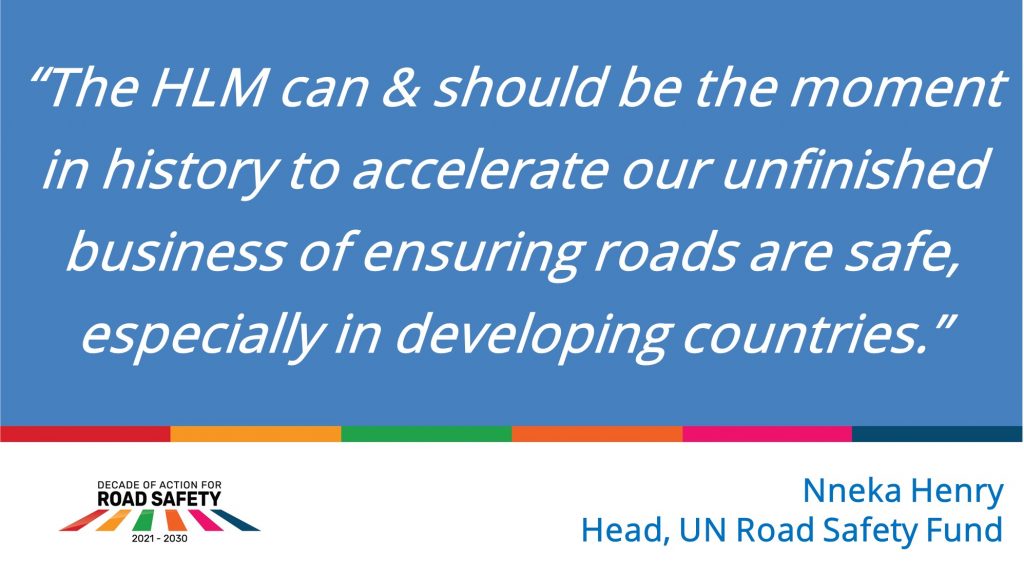
Comisión Nacional de Seguridad de Tránsito (CONASET) is the national road safety agency in Chile. The government of Chile will be represented at the HLM by Karina Muñoz Matus, CONASET’s Executive Secretary. Read about CONASET HERE.
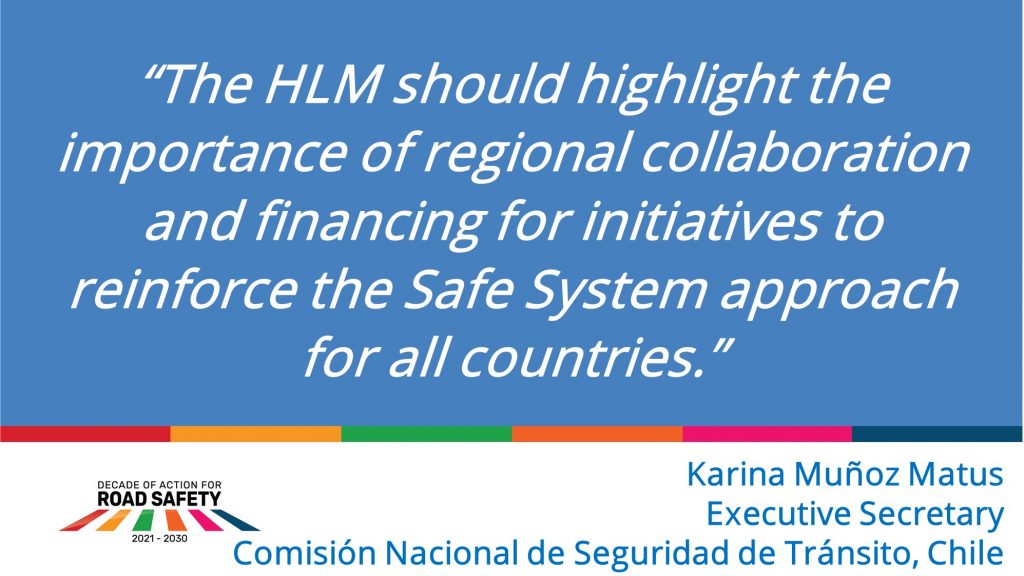
“Our expectations about the HLM are to highlight the importance of regional collaboration and financing for initiatives to promote and reinforce the Safe System approach system for ALL countries. It is important to recognize that there are inequalities that are impeding the forceful implementation of Vision Zero. In many middle-income countries like Chile, government resources for road safety compete with other needs, such as education and health, but international funding is targeted at low-income countries, so road safety is squeezed and does not receive the investment it needs.
“Through the HLM, we hope to strengthen road safety collaboration between Latin American countries to take part in a stronger network across the entire Latin American block.”